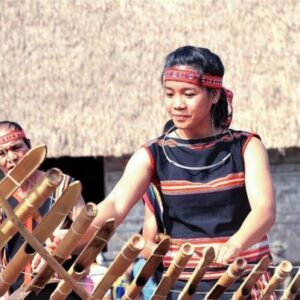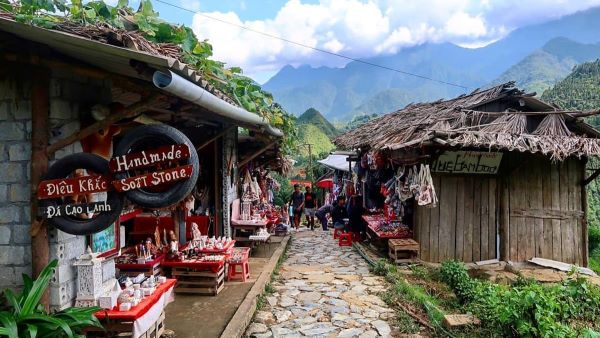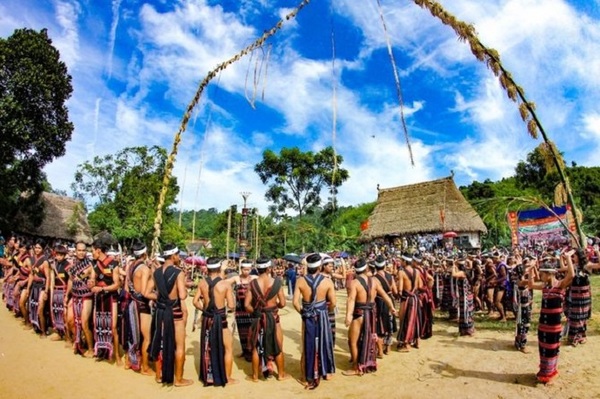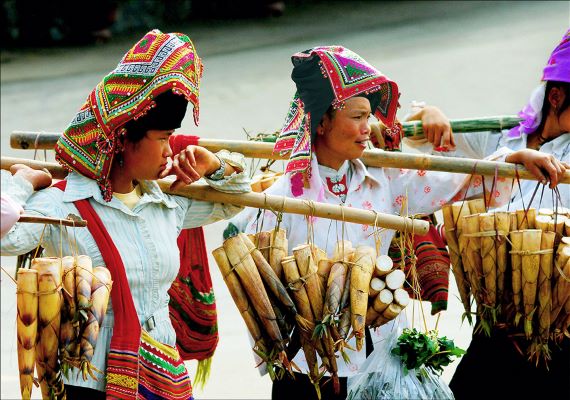General Information of E De Ethnic Group
The E De people, sometimes referred to as Anak, Ea De, Ra De, or Egar, are known for their distinct identity and language. They primarily speak the Ede language, which belongs to the Malayo-Polynesian group, a subset of the Austronesian language family. This language is a key part of their cultural heritage, serving as a means of communication within their community.
Forfaits touristiques recommandés :- Central Highland and Beach: Buon Ma Thuot – Nha Trang in 4 Days
- Central Vietnam Highland Discovery: Buon Ma Thuot, Pleiku, Kon Tum in 7 Days
- Secluded Honeymoon in Central and South Vietnam in 9 Days
History
The E De community has a long and storied history, reflected in their epic poems, architectural styles, and popular arts. For centuries, they have called the Tay Nguyen region of central Vietnam their home. Traces of their origins are deeply embedded in their cultural practices.
One noteworthy aspect of E De society is its matrilineal traditions, which continue to shape their way of life. This means that lineage and inheritance are typically passed through the female side of the family, contributing to a unique social structure and set of customs.
Tradition of E De Ethnic Group
Costume
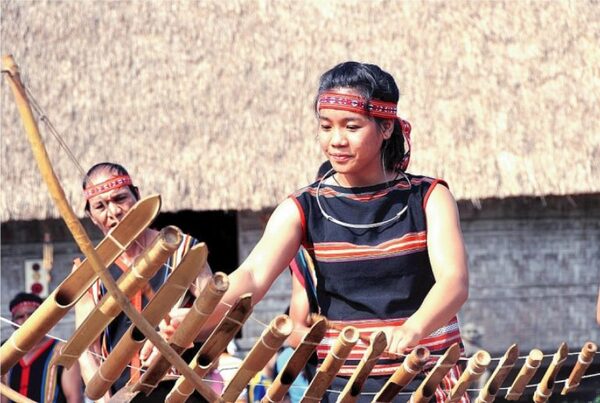
Traditional costume of E De people
The E De people are known for their distinctive traditional attire. Women wear long cloth wrappers or sarongs that reach down to their toes, often pairing them with a short pullover vest. Men, on the other hand, wear loin cloths and vests in a similar style. Blankets are used for added warmth during colder weather. Ede jewelry includes glass beaded necklaces and copper or nickel rings, worn around the neck, wrists, and ankles. Both men and women practice teeth filing, teeth blackening, and the elongation of earlobes. Head coverings, such as turbans and conical hats, are also an integral part of their clothing.
Housing
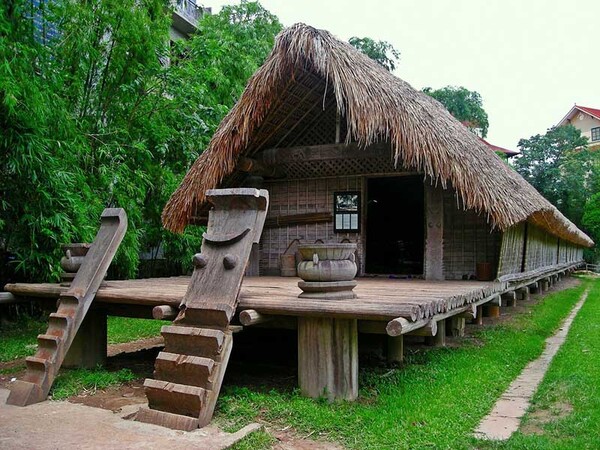
House of E De Ethnic Group
The E De predominantly reside in Dac Lac province, the southern part of Gia Lai province, and the western regions of Phu Yen and Khanh Hoa provinces. Their traditional houses are constructed with a unique design, reminiscent of a boat’s shape, either cut lengthwise or across to create a reversed trapezoid form. These houses are raised on two rows of columns rather than resting on the ground. The interior is divided into two sections: the “Gah,” which serves as a reception area for the extended matrilineal family, and the “Ok,” containing several small rooms designated for couples within the extended family.
Traditional Activities
Marriage
E De matrimonial relations are initiated by women, who select intermediaries to request marriage with a young man. Once married, couples typically live with the wife’s family. In the event of a spouse’s death, the deceased’s lineage must provide a replacement according to the “chue nue” custom to ensure the surviving spouse is not left alone. This tradition also maintains the connection between the two lineages, Nie and Mlo.
Funerals
E De funerals are marked by the “chue nue” observance, a ritual that accompanies each death. If a person from one lineage dies close in time to another from the same lineage, they may be buried together. The E De believe in the continuity between this world and the next, sharing the deceased’s belongings and placing them in the funerary structure.
Festivals
The E De people celebrate various festivals, especially during the last month of the lunar year. These festivals often follow the harvest season, with offerings made to spirits like Ae Die and Ae Du, the Creator, as well as the spirit of rice, yang mdie. The E De are animists, believing in both good and bad spirits associated with natural elements. The more rituals performed, including sacrifices of buffalo and oxen, the higher the esteem of the organizers within the community.
Artistic Activities
One of the most captivating aspects of E De culture is their artistic activities. The “khan” is a long epic poem, richly recounted with vivid exclamations and gestures. It features alternating songs, riddles, and genealogical histories. E De music is highlighted by an ensemble of six flat gongs, three gongs with projections, a gong for rhythm, and a drum. These gongs are integral to their festivals and cultural activities. In addition to gongs, bamboo instruments and calabashes add a distinctive musical dimension to E De culture.
The E De ethnic group is a treasure trove of cultural diversity and tradition. Their history, unique customs, and artistic expressions make them a fascinating subject of study and exploration for travelers in Vietnam. By understanding and appreciating the E De people and their heritage, visitors can gain a deeper appreciation of the rich tapestry of cultures in this region.
In your Vietnam tour, don’t miss the opportunity to experience the warm hospitality, vibrant traditions, and captivating stories of the E De ethnic group. Your journey to discover the E De will undoubtedly be a memorable and enriching experience.

